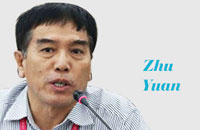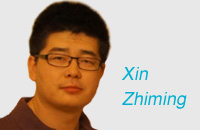Cycle of human rights progress
By Shan Chu (China Daily) Updated: 2013-10-24 07:12The economy is the foundation for promoting and protecting human rights. Over the past years, China has continued to make development its top priority, effectively responded to the impact of the global financial crisis and realized 9.3 percent GDP growth in spite of the widespread economic slowdown in the world. From 2008 to 2012, rural and urban income increased by 9.9 percent and 8.8 percent annually. In 2012, 12.66 million urban jobs were created and 260 million rural migrant workers found jobs in cities. The ratio of government spending on education to GDP increased from 3.31 percent to 4.07 percent. A nationwide primary medical insurance system has been basically established, and over 1.3 billion people have joined various medical insurance programs.
Political rights of Chinese citizens have been better upheld. The judicial system has been strengthened with enhanced human rights protection as an important target. All 60 tasks of the judicial system reform launched in 2008 have been completed and judicial transparency has been improved.
Freedom of speech has been enjoyed extensively. By the end of 2012, the number of netizens in China reached 564 million. People express views freely through micro blogs, postings and other means in accordance with law.
The level of protection of human rights for special groups is an important yardstick in measuring cultural progress in China. From 2008 to 2012, nearly 12.2 million people with disabilities were rehabilitated to varying degrees. By 2012, insurance programs for senior citizens had covered all rural areas and non-working urban residents, with the participation of 790 million people. Ethnic groups enjoy extensive human rights. Their freedom of religious belief and the right to use and develop their spoken and written languages are fully respected and guaranteed.
The successful story of the Chinese way to promote and protect human rights is quite different from the Western style. This, once again, proves that there is neither a universally applicable nor best model of human rights development, but only the most appropriate.
As the saying goes, none but the wearer knows if the shoe fits. Different countries face different challenges and priority tasks in the field of human rights, and their paths toward human rights development are bound to differ as well.
To judge whether a path is good or not, the key is to see whether it meets people's needs and aspirations and brings benefits to the people. The socialist human rights development path with Chinese characteristics chosen by the Chinese people suits China's conditions, and has effectively safeguarded various rights of 1.3 billion people and upgraded China's human rights development to an unprecedented level. Thus, China should stay firmly on this path.
As another proverb says, none but the wearer knows where the shoe pitches. China is a big developing country with a vast population. We should be soberly aware of the difficulties and challenges we face. Arduous efforts are still to be made to solve the numerous problems in the development of various undertakings that bear on the people's vital interests. There is still room for improvement. New ways and measures need to be explored to better promote and protect human rights. We have every reason to believe that by the next cycle of the UPR on China, we will see even greater progress in the field of human rights.
The author is a Beijing-based scholar of international relations.
(China Daily 10/24/2013 page9)











